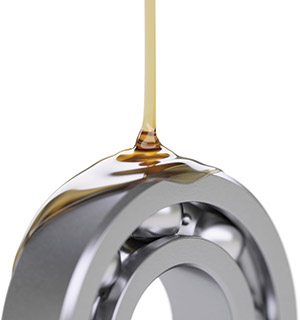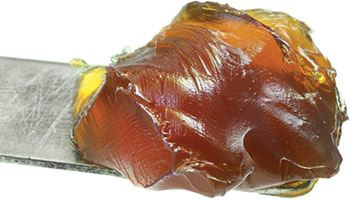Lube Tips
 The “LUBE-TIPS” section of Machinery Lubrication magazine features innovative ideas submitted by our readers. Additional tips can be found in our Lube-Tips email newsletter. If you have a tip to share, email it to us at info@machinerylubricationindia.com.
The “LUBE-TIPS” section of Machinery Lubrication magazine features innovative ideas submitted by our readers. Additional tips can be found in our Lube-Tips email newsletter. If you have a tip to share, email it to us at info@machinerylubricationindia.com.
Remove Buildup and Improve Bearing Life
When vibration analysis is indicating that the lube schedule has become inadequate, it can mean there is a buildup of thickener in the bearing housing. If regreasing does not reduce vibration energy levels, it is time to isolate the equipment, clean out the old grease and repack. You will see a significant decrease in energy levels, which will greatly increase bearing life.
Use Quick Couplers to Prevent Contamination
When changing or topping off an oil supply system with a filter cart, consider using quick couplers to ensure a clean exchange of fluid. Have a “dummy” connection on the cart to fasten to the fill hose when not in use. This will help keep the hose-end coupling clean and prevent contamination. Also, ensure that the coupler on the machine has a cover to prevent contamination.
Minimizing Air Entrainment in Hydraulic Fluids
Return lines into hydraulic reservoirs should be larger than the intake line and generally be positioned below the surface of the oil to minimize air entrainment. Locate the return line as far away from the suction as possible to allow the oil as much residence time as possible. If this is not possible, install a baffle or weir between the suction and discharge lines. One suggestion to improve oil flow in the reservoir is to cut the return line at an angle so that it directs flow back toward the tank wall.
Critical Advice for Filling Gearboxes
Underfilling a gearbox sump obviously can result in a lack of lubrication, but overfilling may be equally destructive. It can cause the oil to overheat as well as produce foam and air entrainment. The fluid may also overflow. Eventually, higher temperatures and increased exposure to air can lead to oil oxidation, which results in sludge, varnish and corrosive byproducts.
Temperature as a Bearing Lubrication Indicator
When a properly packed bearing starts up, there will be an initial rise in the temperature while the grease disperses throughout the bearing and housing before falling off to a steady operating temperature. If the temperature does not drop, then there is too much grease in the bearing or there is a problem with the bearing fit.
 Simple Technique for Inspecting Oil Sump Bottoms
Simple Technique for Inspecting Oil Sump Bottoms
Over time, debris can collect at the bottom of an oil sump. An easy and inexpensive way to determine the condition of a tank bottom on turbine packages is to use a 1/2-inch PVC pipe that is long enough to reach the bottom of the sump. Glue a collar on one end with a piece of clear Lexan glued into it. Position the pipe close to the bottom and insert a borescope. It works like wearing a diver’s mask underwater, allowing you to clearly see the debris and then document its condition.
Easy Grease Test Uncovers Bearing Issues
Here is a simple onsite test for checking bearing condition with grease ferrous debris analysis. When the equipment is available, obtain a small grease sample from the bearing and dissolve it with a solvent in a small, clear oil sampling bottle. If you have multiple bearings, try to use the same amount of grease and solvent for each.
After the grease is dissolved into a liquid, tape a small, round button magnet to the outside of the bottle. Tilt the bottle at an angle so the liquid flows up toward the cap on top of the magnet. After 30 minutes, stand the bottle straight up so the liquid flows back down and let the ferrous debris dry inside the bottle with the magnet still attached. After it dries, remove the magnet and you can see if there is any ferrous metal. You can use this method with multiple samples in order to determine if one bearing is wearing faster than others.
